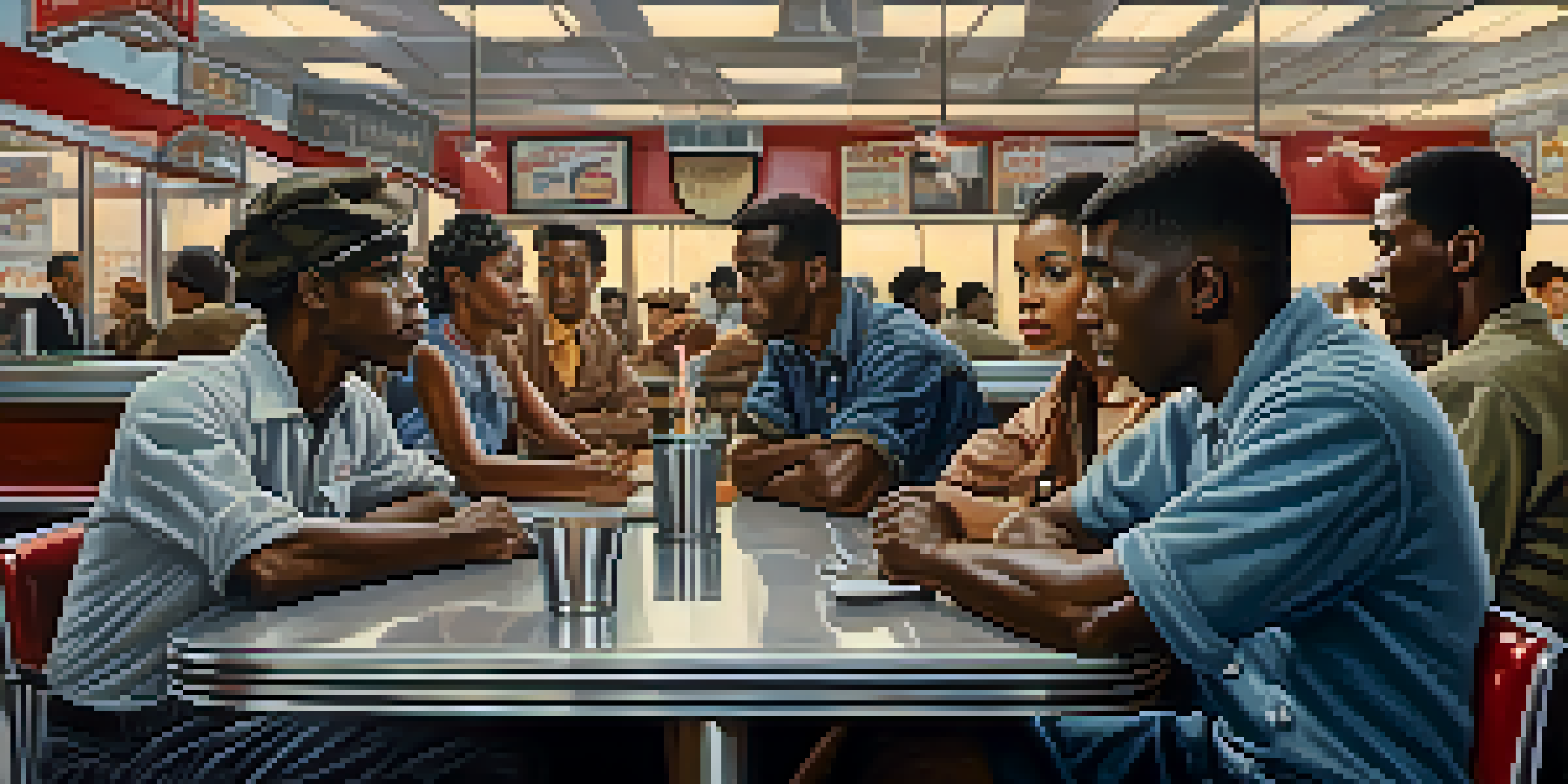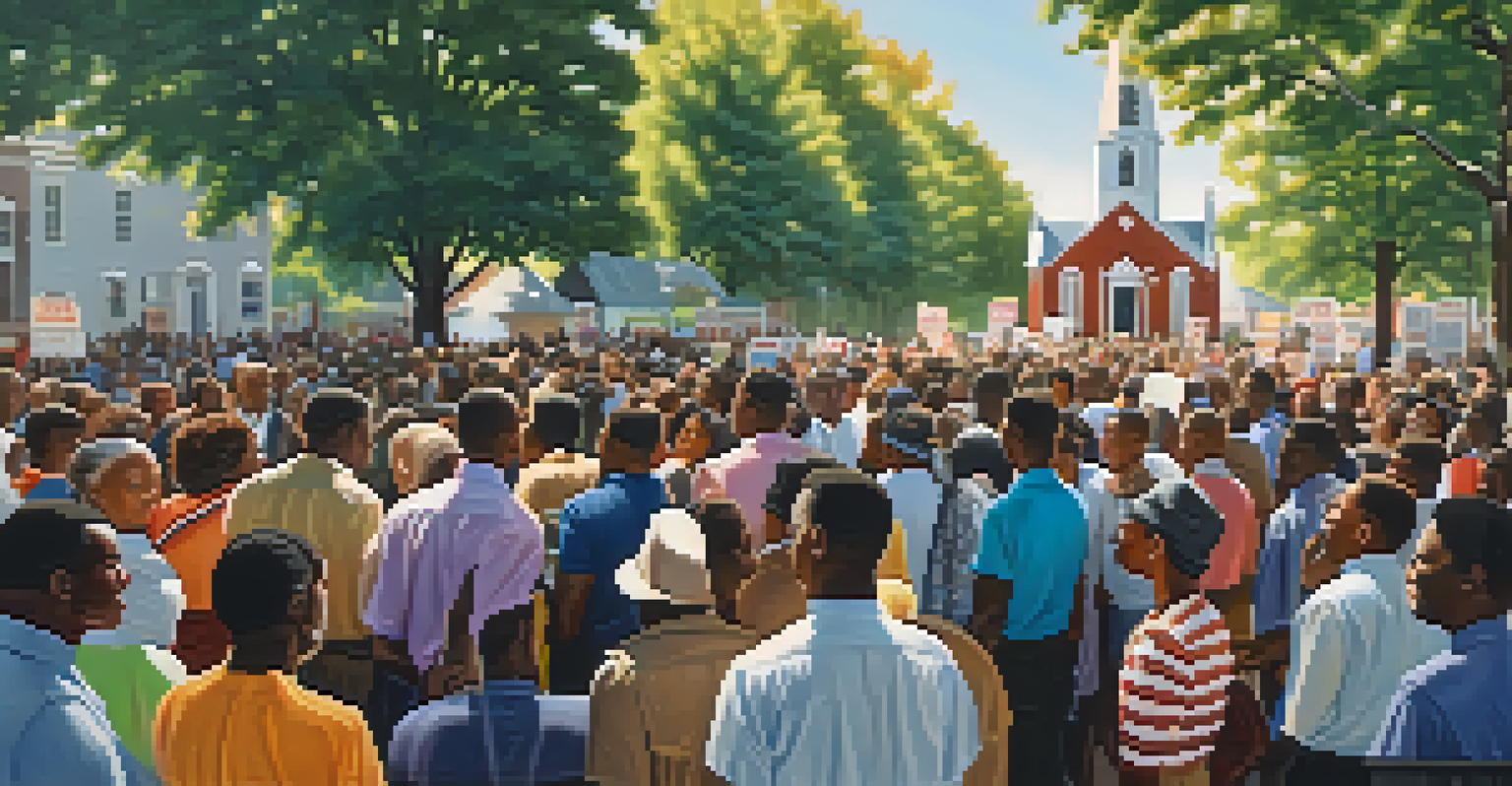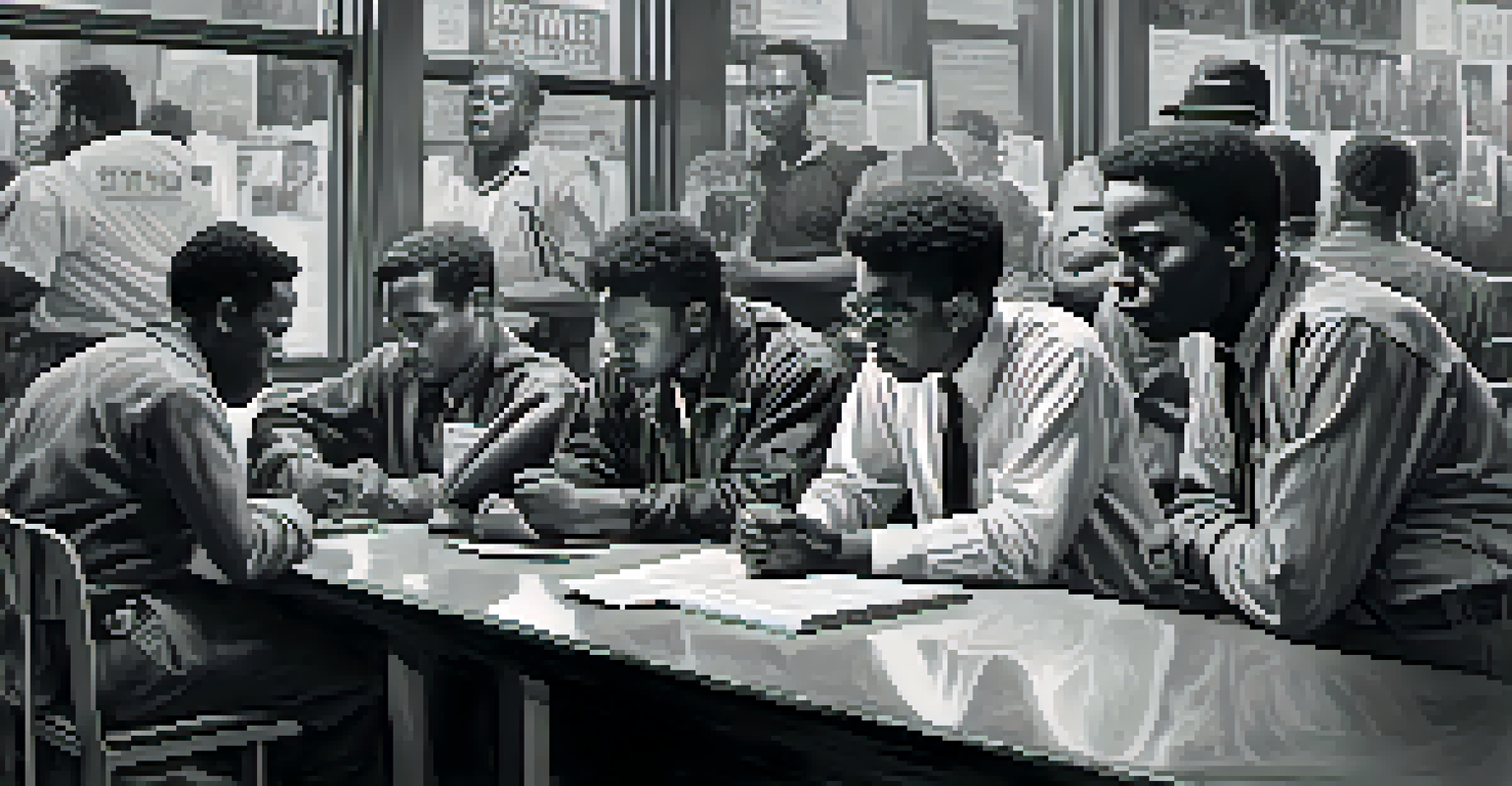Memphis Sit-Ins: A Catalyst for Change in the 1960s

The Background of the Memphis Sit-Ins
The Memphis Sit-Ins emerged during a time of intense racial segregation in the South. In the early 1960s, public spaces, including restaurants and parks, were often strictly divided along racial lines. This injustice prompted local activists to seek change, fueled by broader civil rights movements taking place across the country.
Injustice anywhere is a threat to justice everywhere.
Many young African Americans were inspired by the successes of sit-ins in cities like Greensboro, North Carolina. They saw these nonviolent protests as a powerful way to challenge the status quo. The idea was simple yet revolutionary: occupy a space that was denied to them and peacefully demand service.
As tensions in Memphis grew, the stage was set for a series of sit-ins that would capture national attention. Activists believed that by taking a stand in public spaces, they could highlight the urgent need for equality and challenge the city's entrenched segregationist policies.
Key Figures in the Memphis Sit-Ins
Among the notable leaders of the Memphis Sit-Ins was the young activist, Maxine Smith. As a member of the local NAACP, she played a crucial role in organizing the protests and rallying support. Her leadership exemplified how young people were at the forefront of the civil rights movement, bringing fresh energy and determination.

Another significant figure was Benjamin Hooks, who later became a prominent civil rights leader and the first African American on the Federal Communications Commission. Hooks’s involvement in the sit-ins laid the groundwork for his lifelong commitment to civil rights advocacy. His experiences during these protests shaped his understanding of the systemic issues facing African Americans.
Sit-Ins Spark Change in Memphis
The Memphis Sit-Ins highlighted the power of nonviolent protest, leading to the desegregation of public spaces in the city.
These leaders and many others worked tirelessly to coordinate the sit-ins, ensuring that participants remained committed to nonviolence. Their efforts not only galvanized local activists but also inspired others across the nation to join the fight for equality.
The First Sit-In: A Day of Defiance
The first sit-in took place on February 1, 1960, at a local Woolworth's lunch counter, where African Americans were routinely denied service. Activists, including students from local colleges, took their seats at the counter, determined to make their voices heard. This act of civil disobedience was a bold statement against the injustices they faced daily.
You may not be able to change the world, but you can change your world.
As the sit-in progressed, the activists faced hostility from patrons and management alike. Yet, they remained resolute, often enduring verbal abuse and intimidation. Their commitment to peaceful protest showcased their dedication to the cause and highlighted the moral high ground they sought to maintain.
The courage displayed during this initial sit-in sparked a wave of similar protests throughout Memphis and beyond. It served as a powerful reminder that change could be achieved through unity and nonviolent action.
Community Support and Mobilization
The success of the Memphis Sit-Ins was bolstered by strong community support. Local churches and civil rights organizations rallied behind the protesters, providing resources and encouragement. This collective effort emphasized the importance of community in the fight for justice, illustrating how interconnected their struggles were.
Support came in various forms, from donations of food to volunteers who helped organize events and educate others about the movement. Community members played a vital role in sustaining the sit-ins, ensuring that the activists felt backed by their neighbors and friends. This solidarity was crucial for maintaining momentum and morale during challenging times.
Community Support Fueled Protests
Local churches and organizations played a crucial role in mobilizing support and resources for the activists during the sit-ins.
As word spread about the sit-ins, more individuals joined the cause, creating a powerful coalition for change. The sense of unity among participants reinforced their resolve and sent a clear message to local leaders about the demand for equality.
The Role of Media in the Memphis Sit-Ins
Media coverage played a pivotal role in amplifying the message of the Memphis Sit-Ins and bringing national attention to the civil rights struggle. Photographers and journalists documented the protests, capturing powerful images of the activists’ courage and determination. These visuals served as a stark contrast to the prevailing narratives surrounding segregation.
Television broadcasts and print articles reached audiences far beyond Memphis, inspiring solidarity and action in other cities. The dramatic scenes of young people facing adversity head-on resonated with viewers, prompting many to reevaluate their own beliefs about race and justice. This widespread media coverage helped to garner support for the movement.
As a result, the Memphis Sit-Ins not only advanced local efforts for desegregation but also contributed to a broader national dialogue about civil rights. The images and stories from these protests became symbols of the fight against injustice, influencing public opinion and policy.
Consequences and Achievements of the Sit-Ins
The Memphis Sit-Ins had significant consequences, leading to increased awareness of racial discrimination and a push for desegregation across the city. Following weeks of protests, Woolworth's and other establishments began to reconsider their policies, reflecting the growing pressure from the community and activists. This tangible change was a testament to the power of collective action.
In April 1960, the lunch counters at Woolworth's and other locations in Memphis were officially desegregated. This victory was celebrated not only by local activists but also by civil rights supporters nationwide. It demonstrated that peaceful protests could lead to meaningful change in the fight for equality.
Media Amplified Civil Rights Message
Extensive media coverage of the sit-ins brought national attention to the civil rights struggle, inspiring action and solidarity across the country.
However, the sit-ins were just one step in a larger movement. While desegregation was achieved in some establishments, the struggle for equal rights continued, highlighting the ongoing nature of the fight against systemic racism.
Legacy of the Memphis Sit-Ins
The legacy of the Memphis Sit-Ins extends far beyond their immediate outcomes, influencing future generations of activists. They served as a blueprint for nonviolent protest, showcasing the effectiveness of grassroots organizing and community involvement. Many later movements drew inspiration from the strategies employed during these sit-ins.
In contemporary discussions about civil rights, the sit-ins are often referenced as a pivotal moment in America's ongoing journey towards equality. Their impact can be seen in various social movements today, where activists continue to use peaceful protests to demand justice and systemic change.

Ultimately, the Memphis Sit-Ins remind us of the courage it takes to stand up against injustice. They highlight the power of ordinary individuals to effect change, reinforcing the belief that collective action can lead to a more equitable society for all.